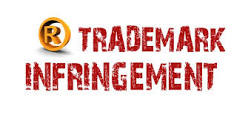What is trademark infringement?
Trademark infringement is the unauthorized use of a trademark or service mark on or in

connection with goods and/or services in a manner that is likely to cause confusion, deception, or mistake about the source of the goods and/or services.
How do I know whether infringement has occurred?
To support a trademark infringement claim in court, a plaintiff must prove that it owns a valid mark, that it has priority (its rights in the mark(s) are “senior” to the defendant’s), and that the defendant’s mark is likely to cause confusion in the minds of consumers about the source or sponsorship of the goods or services offered under the parties’ marks. When a plaintiff owns a federal trademark registration on the Principal Register, there is a legal presumption of the validity and ownership of the mark as well as of the exclusive right to use the mark nationwide on or in connection with the goods or services listed in the registration. These presumptions may be rebutted in the court proceedings.
Generally, the court will consider evidence addressing various factors to determine whether there is a likelihood of confusion among consumers. The key factors considered in most cases are the degree of similarity between the marks at issue and whether the parties’ goods and/or services are sufficiently related that consumers are likely to assume (mistakenly) that they come from a common source. Other factors that courts typically consider include similarities between how and where the parties’ goods or services are advertised, marketed, and sold; similarities in the purchasing conditions; similarities in the range of prospective purchasers of the goods or services; whether there is any evidence of actual confusion caused by the allegedly infringing mark; the defendant’s intent in adopting its mark; and the strength of the plaintiff’s mark.
The particular factors considered in a likelihood-of-confusion determination, as well as the weighing of those factors, vary from case to case. The amount and quality of the evidence involved can have a significant impact on the outcome of a trademark infringement lawsuit.
In addition to claiming likelihood of confusion, a trademark owner may claim trademark “dilution,” asserting that it owns a famous mark and the use of your mark diminishes the strength or value of the trademark owner’s mark by “blurring” the mark’s distinctiveness or “tarnishing” the mark’s image by connecting it to something distasteful or objectionable – even if there is no likelihood of confusion.
An experienced Indiana trademark attorney, taking the particular circumstances of your case into consideration, should be able to provide you with an opinion as to the validity and strength of a trademark owner’s claims.
How do I protect my own mark and what if I believe someone is infringing?
While the provisions of Section 2(d) of the Lanham Act require the U.S. Patent and Trademark Office to refuse registration of a mark that is similar to a previously registered mark and is used on the same or related goods or services, the USPTO does not engage in any policing efforts or enforcement activities in connection with the infringement of registered marks. Thus, throughout the life of a trademark registration, a mark owner who wants to maintain rights in its mark must police its mark and enforce its rights against others who are infringing. If you think someone is infringing your trademark rights, you may pursue the options described in the following section. You should strongly consider contacting an Indiana attorney specializing in trademark law. Often, time is of the essence when it comes to enforcing trademark rights.
 Indiana Intellectual Property Law News
Indiana Intellectual Property Law News

